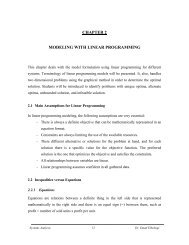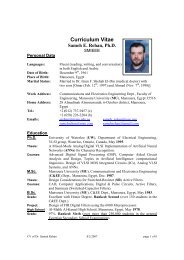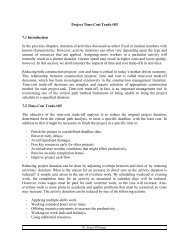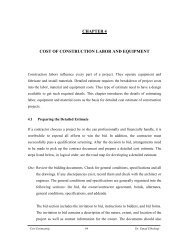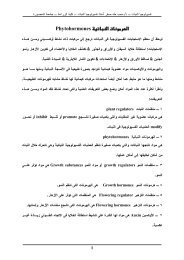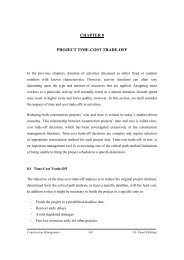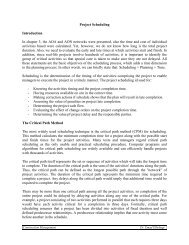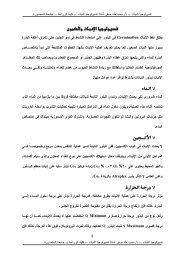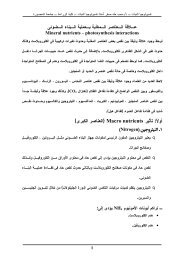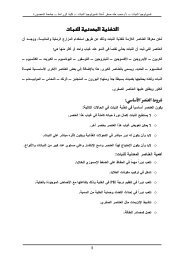Thyroid and Parathyroid
Thyroid and Parathyroid
Thyroid and Parathyroid
You also want an ePaper? Increase the reach of your titles
YUMPU automatically turns print PDFs into web optimized ePapers that Google loves.
thyroid. Treatment is provided in the form of a drink of 131I sodium iodide, the<br />
dosage of which usually is calculated with a formula based on gl<strong>and</strong> volume <strong>and</strong> 131I<br />
uptake; the typical initial dose is about 10 mCi of 131I (approximately 8500 cGy).<br />
Cure rate after initial therapy is dosage dependent; with 5 mCi, cure rate is 70 percent;<br />
with 10 mCi, 87 percent; <strong>and</strong> with 15 mCi, 96 percent. The higher the initial dose, the<br />
. earlier the onset <strong>and</strong> the higher the incidence of hypothyroidism<br />
After st<strong>and</strong>ard treatment with radioiodine most patients become euthyroid within 2<br />
months. Approximately 15 percent of patients are hypothyroid at 1 year, with a 3<br />
percent increment each year thereafter. Six months after radioiodine treatment, 50<br />
percent of patients are euthyroid, <strong>and</strong> the remainder are hyperthyroid or already<br />
hypothyroid. Patients need long- term follow-up with TSH levels monitored on a<br />
regular basis. Close monitoring is essential, because hypothyroidism <strong>and</strong> recurrent<br />
. hyperthyroidism aggravate Graves' ophthalmopathy<br />
The complications of 131I treatment include: (1) exacerbation of thyrotoxicosis with<br />
arrhythmias; this usually becomes apparent within 10 days <strong>and</strong> may be a particular<br />
problem in the elderly, precipitating cardiac failure or death; (2) overt thyroid storm<br />
(rare but potentially life threatening); (3) hypothyroidism; (4) risk of fetal damage in<br />
patients who are pregnant (women are advised not to become pregnant for 6 months<br />
to 1 year after treatment); (5) worsening of eye signs, noted to be more common after<br />
131I treatment than after surgery (33 percent compared to 16 percent); <strong>and</strong> (6)<br />
. hyperparathyroidism<br />
Surgical Treatment<br />
Surgery is advised when radioiodine treatment is contraindicated, such as for young<br />
patients, patients with Graves' ophthalmopathy, pregnant patients, patients with<br />
suspicious thyroid nodules in Graves' gl<strong>and</strong>s, <strong>and</strong> patients with large toxic nodular<br />
goiters with relatively low levels of radioiodine uptake. <strong>Thyroid</strong>ectomy is the<br />
treatment of choice in patients with very large goiters <strong>and</strong> severe thyrotoxicosis at<br />
initial presentation. There is a higher failure rate with 131I treatment in these groups,<br />
necessitating additional therapy. In the United States radioiodine is the usual<br />
treatment for patients over 35 years of age with Graves' disease; in the United<br />
Kingdom <strong>and</strong> many other countries thyroidectomy is more frequently used because it<br />
is associated with less hypothyroidism <strong>and</strong> more rapid correction of hyperthyroidism.<br />
The objective of thyroidectomy for Graves' disease should be the complete <strong>and</strong><br />
permanent control of the disease with minimal risk of morbidity in terms of nerve <strong>and</strong><br />
. parathyroid damage<br />
Patients should be euthyroid before operation with antithyroid drugs that should be<br />
continued up to the day of surgery. Many physicians prefer to treat patients with<br />
Lugol's iodine solution (3 drops twice daily) in the 10 days before operation, <strong>and</strong><br />
some use propranolol. Preoperative treatment with iodine reduces the vascularity of<br />
the gl<strong>and</strong>. All these measures decrease the risk of thyroid storm, which can be<br />
. precipitated by surgery in unprepared patients<br />
Whether subtotal, near-total, or total thyroidectomy should be performed is<br />
controversial. The most commonly undertaken procedure, <strong>and</strong> perhaps the safest in<br />
terms of morbidity, is bilateral subtotal thyroidectomy, in which about 1 to 2 g of<br />
thyroid tissue is left on both sides, or a total lobectomy on one side <strong>and</strong> a subtotal



